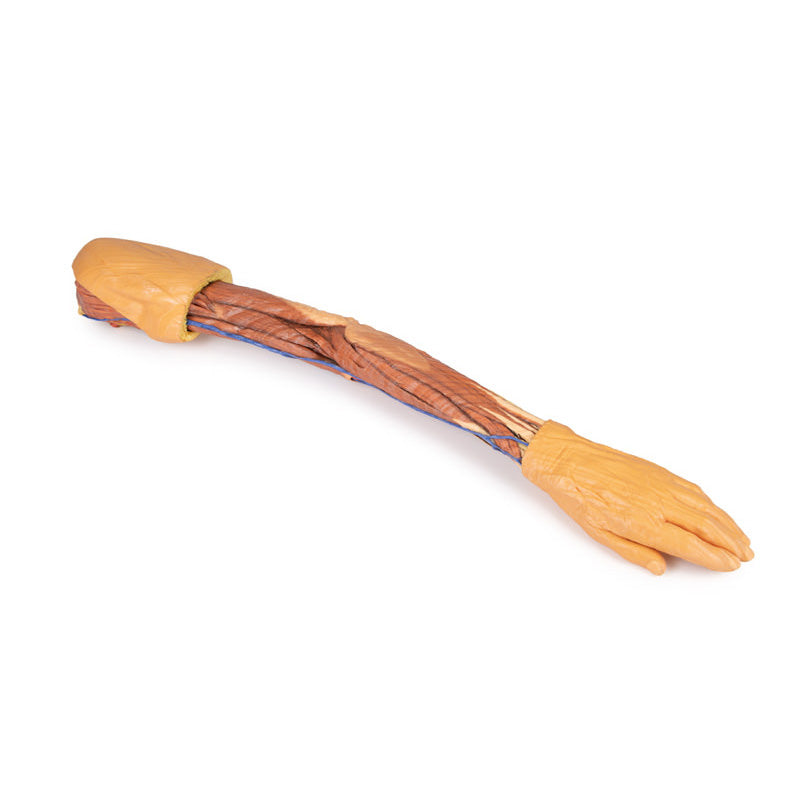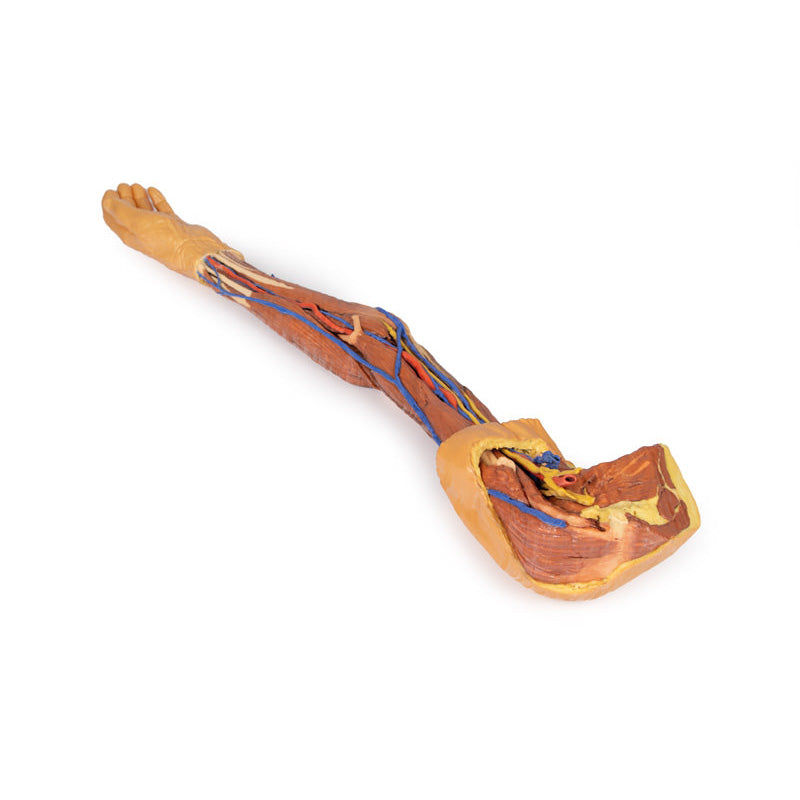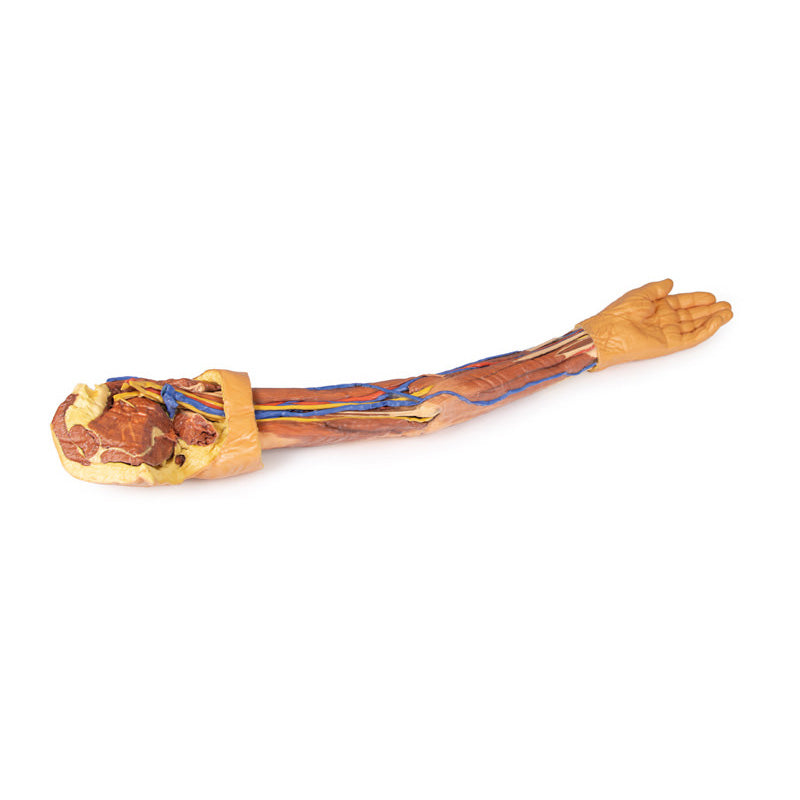Your shopping cart is empty.
3D Printed Upper Limb Replica


10.0 lb
🎄 HOLIDAY SAVINGS - Ends Dec 31 🎄
Discount has been automatically applied for this item.
3D Printed Upper Limb Replica
Item # MP1500
$3,040.00
$3,378.00
You save $338.00
Need an estimate?
Click Add To Quote

Features & Specifications
-
by
A trusted GT partner -
FREE Shipping
U.S. Contiguous States Only -
3D Printed Model
from a real specimen -
Gov't pricing
Available upon request
Frequently Bought Together
3D Printed Upper Limb Replica
This 3D print demonstrates a superficial dissection of a left upper limb from the blade of the scapula to the hand. The skin, superficial and deep fascia has been removed from most of the limb except over the dorsum of the scapula, proximal arm, and over the hand. The median cubital vein, cephalic and basilic veins are preserved, with the latter two preserve from the wrist to their terminations (in the deltopectoral groove and brachial vein, respectively).

In the axilla, cross-sections of the deltoid, supraspinatus, infraspinatus, teres minor, teres major, and subscapularis muscles are visible relative to the bony blade and spine of the scapula. The coracobrachialis and tendon of the latissimus dorsi are also preserved, as well as the tendon of the pectoralis major.
The lateral portions of the axillary artery and vein and the most lateral extend of the cords of the brachial plexus (medial, lateral, posterior)are also present. Terminal nerves of the brachial plexus visible in the axilla of this specimen include the upper subscapular, ulnar, median, musculocutaneous, axillary and radial.
The course of the deep vessels and nerves of the upper limb is exposed through the arm from proximal to distal, as well as the muscles of the anterior and posterior compartments. In the cubital region part of the bicipital aponeurosis is preserved. The superficial layer of anterior and posterior forearm muscles are exposed from their origin to their tendons distally, with a small portion of deep forearm fascia over the extensor compartment maintained for reference. At the most distal extent of the dissected forearm, the ulnar and radial arteries and median nerve are visible.
Download Handling Guidelines for 3D Printed Models
GTSimulators by Global Technologies
Erler Zimmer Authorized Dealer
The lateral portions of the axillary artery and vein and the most lateral extend of the cords of the brachial plexus (medial, lateral, posterior)are also present. Terminal nerves of the brachial plexus visible in the axilla of this specimen include the upper subscapular, ulnar, median, musculocutaneous, axillary and radial.
The course of the deep vessels and nerves of the upper limb is exposed through the arm from proximal to distal, as well as the muscles of the anterior and posterior compartments. In the cubital region part of the bicipital aponeurosis is preserved. The superficial layer of anterior and posterior forearm muscles are exposed from their origin to their tendons distally, with a small portion of deep forearm fascia over the extensor compartment maintained for reference. At the most distal extent of the dissected forearm, the ulnar and radial arteries and median nerve are visible.
Download Handling Guidelines for 3D Printed Models
GTSimulators by Global Technologies
Erler Zimmer Authorized Dealer
These items normal warranty are two years, however the warranty doesn’t cover “wear and tear”. The manufacturer does have 100% quality control on these models.
The models are very detailed and delicate. With normal production machines you cannot realize such details like shown in these models.
The printer used is a color-plastic printer. This is the most suitable printer for these models.
The plastic material is already the best and most suitable material for these prints. (The other option would be a kind of gypsum, but this is way more fragile. You even cannot get them out of the printer without breaking them).The huge advantage of the prints is that they are very realistic as the data is coming from real human specimen. Nothing is shaped or stylized.
The users have to handle these prints with utmost care. They are not made for touching or bending any thin nerves, arteries, vessels etc. The 3D printed models should sit on a table and just rotated at the table.
The models are very detailed and delicate. With normal production machines you cannot realize such details like shown in these models.
The printer used is a color-plastic printer. This is the most suitable printer for these models.
The plastic material is already the best and most suitable material for these prints. (The other option would be a kind of gypsum, but this is way more fragile. You even cannot get them out of the printer without breaking them).The huge advantage of the prints is that they are very realistic as the data is coming from real human specimen. Nothing is shaped or stylized.
The users have to handle these prints with utmost care. They are not made for touching or bending any thin nerves, arteries, vessels etc. The 3D printed models should sit on a table and just rotated at the table.

by — Item # MP1500
3D Printed Upper Limb Replica
$3,040.00
$3,378.00
Add to Cart
Add to Quote










































































